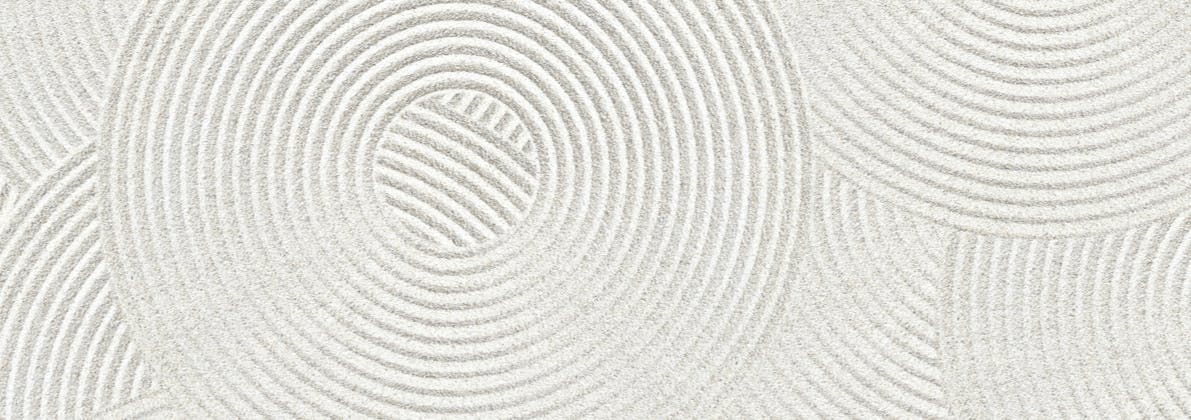As a facial plastic surgeon in Scottsdale, I spend much of my time helping patients look and feel their best through procedures like the deep plane facelift—a surgical approach that rejuvenates the face and neck by lifting the underlying muscle layer (SMAS) and re-draping the skin in a natural, youthful way. The deep plane technique delivers some of the most natural and long-lasting results available today, but like all surgeries, the recovery process is just as important as the operation itself.
And here in Phoenix, recovery comes with its own unique challenge: our intense summer sun and heat.
I want to walk you through why summer conditions matter so much after a facelift, what’s actually happening in your skin and tissues during healing, and exactly how to protect your results if you’re recovering—or planning surgery—during the hotter months.
This isn’t about telling you to hide inside until October. It’s about giving you the knowledge and tools to heal beautifully, even in the most unforgiving climate.
Why Summer Sun and Heat Are a Bigger Deal After Facelift Surgery
When you’ve had a facelift, especially a deep plane facelift, your skin and deeper tissues are in a delicate, highly active state of repair for weeks and months after surgery. The collagen fibers are reorganizing, blood vessels are regenerating, and the skin’s protective barrier is still vulnerable.
That’s why the two biggest environmental hazards in a Phoenix summer—UV radiation and extreme heat—can have outsized effects on your healing.
1. UV Radiation and Healing Skin
- New collagen and elastin fibers are fragile – they can be damaged more easily by UV rays.
- Pigment cells (melanocytes) are hyper-responsive during healing – making you more prone to hyperpigmentation (permanent dark spots) at or near incision sites.
- Inflammation from UV exposure can prolong redness, swelling, or sensitivity.
Even short sun exposure—like walking from your car to a store—can accumulate over time and have visible effects on scars and overall skin quality.
2. Heat and Circulatory Stress
- Increased swelling: Heat dilates blood vessels, which can prolong or worsen post-surgical swelling in the face and neck.
- Fluid retention: Heat exposure can make your lymphatic system work harder, slowing resolution of residual puffiness.
- Risk of inflammation flare-ups: Even months after surgery, excessive heat can cause lingering redness in incision lines.
- Overall fatigue and dehydration: Your body needs hydration and energy for tissue repair; heat stress diverts resources toward cooling you down.
In short: UV light can permanently affect how your skin heals, and heat can slow down the healing process.
The Healing Timeline: How Long You’re at Risk
- First 2 weeks: You’ll be indoors almost entirely, and sun avoidance is critical. Even brief exposure is discouraged.
- Weeks 3–6: Your swelling is improving, but the skin is still highly sensitive. Outdoor activity should be minimal, with full protection if you step outside.
- Months 2–6: Your incision lines and deeper tissues are still remodeling. You can be outdoors more, but high-level sun protection is still essential.
- Months 6–12: Most swelling and redness have resolved, but scar tissue continues to mature. You can resume normal sun activities—with consistent, lifelong sun protection.
In Phoenix, the intensity of UV rays and heat means that even 6–12 months post-surgery, I still recommend elevated caution compared to someone recovering in a milder climate.
Why Phoenix Makes Recovery Trickier
If you live here, you already know we have three seasons: “warm,” “hot,” and “please don’t touch the steering wheel.”
From May through September, the UV index often measures in the “very high” to “extreme” range. That means skin can burn in under 10 minutes without protection. Add in low humidity, and our skin’s barrier can dry out faster than in coastal climates, making it even more vulnerable.
For my facelift patients, this means that recovery protocols in Phoenix are more strict than what you might read in a general facelift recovery guide online. We’re playing in the major leagues of sun exposure here.
Practical Strategies to Protect Your Facelift This Summer
1. Avoid Direct Sun During Peak Hours
- The sun’s rays are strongest between 10 AM and 4 PM.
- Plan errands, walks, or social activities in the early morning or after sunset.
- If you must be out mid-day, minimize time spent outside and use protective clothing.
2. Make Sun Protection a Daily Habit
Sunscreen:
- Use broad-spectrum SPF 50+ on your face, neck, and any exposed skin—even if you’re only outside briefly.
- Choose physical (mineral) sunscreens with zinc oxide or titanium dioxide for the gentlest protection on healing skin.
- Reapply every 2 hours if outdoors, or immediately after sweating.
Hats:
- Wear a wide-brimmed hat (4 inches or more) made from tightly woven fabric.
- Baseball caps are better than nothing but leave your neck and ears exposed.
Sunglasses:
- Large, UV-blocking sunglasses help protect your eyes and the delicate skin around them.
3. Protect Incisions
- Keep incision lines completely covered when possible for the first several months.
- Silicone scar sheets or medical tape can offer both UV protection and help scars heal flatter and softer.
- Avoid makeup over fresh incisions until cleared, but once healed enough, mineral makeup can add an extra layer of sun defense.
4. Beat the Heat
- Stay indoors during peak heat—not just for your skin but for your overall health.
- Cool compresses can be used on the cheeks and neck if you feel flushed.
- Hydrate aggressively—both water and electrolyte-balanced drinks.
- Keep your indoor environment cool and humidified to prevent skin dryness.
5. Adjust Physical Activity
- Intense exercise outdoors is discouraged in the first 6 weeks due to swelling risk and overheating.
- Even after clearance, choose early-morning workouts or air-conditioned gyms during the summer.
- Heat stress can increase facial blood flow, which may prolong redness in healing skin.
6. Moisturize and Support the Skin Barrier
- Use gentle, fragrance-free moisturizers to maintain hydration.
- In the desert, I often recommend layering a hydrating serum under a richer cream, especially at night.
- Avoid harsh exfoliants, strong retinoids, or acid peels until fully healed.
7. Mind the Cumulative Exposure
It’s easy to think “I was only outside for a few minutes”—but those minutes add up. Post-facelift, you’re not just protecting yourself from a sunburn—you’re protecting against permanent pigment changes and prolonged swelling.
Traveling During a Summer Recovery
- If traveling to the beach or mountains, remember that UV intensity increases with altitude and reflection off water or sand.
- Pack portable sun protection: a travel-sized mineral sunscreen, foldable hat, and light scarf or UPF wrap.
- On flights, keep in mind that UV exposure is higher at cruising altitude if you’re in a window seat. Keep the shade down.
- Stay consistent with your hydration, especially in dry climates or long travel days.
Common Myths About Sun Exposure After Facelift Surgery
- Myth 1: “If I’m wearing sunscreen, I can be in the sun as much as I want.”
Truth: Sunscreen helps, but it’s not a force field. Reapplication is crucial, and physical barriers (hats, shade) are your best friend. - Myth 2: “Once my stitches are out, I don’t need to worry about the sun.”
Truth: Stitches are removed early in healing, but tissue remodeling takes months. You’re still at risk for pigment changes and swelling. - Myth 3: “I tan easily, so I’m not at risk.”
Truth: All skin types can develop hyperpigmentation or scar darkening during healing, even if you don’t burn.
What Happens If You Don’t Protect Your Skin
- Persistent redness for months instead of weeks
- Darker scars that take much longer to fade—or never fully blend with surrounding skin
- Prolonged swelling in the face and neck
- Skin texture changes from UV damage that undermine the smoothness of your results
The Long Game: Why Sun Protection Should Be Lifelong
- Sunscreen slows collagen breakdown and helps maintain firmness.
- Shade and hats prevent cumulative pigment changes and texture damage.
- Hydration and skin-barrier care keep your skin more resilient over time.
Think of sun protection not as a restriction, but as insurance for your investment—not just financially, but in the time and trust you put into your surgery.
My Personal Phoenix Recovery Protocol for Summer Facelifts
- First 2 Weeks:
Indoors entirely, blinds closed during peak hours
Light, breathable scarves to protect skin when moving around indoors near windows
No outdoor errands unless absolutely necessary, and only in early morning or evening with full hat/sunscreen - Weeks 3–6:
Still avoid mid-day sun; errands before 9 AM or after 6 PM
Begin using SPF 50+ daily, wide-brimmed hat for any outdoor time
Light walks in early morning OK, but avoid heat build-up - Months 2–3:
More flexibility with outdoor activity, but avoid prolonged exposure
Continue hats + sunscreen as non-negotiable
Hydrate aggressively in heat - Months 4–12:
Outdoor activities resume with consistent sun protection
Be aware that even “faded” scars can still darken if exposed to strong sun
Final Thoughts
Recovering from a deep plane facelift is a partnership between what I do in the operating room and what you do afterward. In Phoenix’s intense summer climate, your diligence in protecting your skin from sun and heat is not just a suggestion—it’s part of the treatment.
I’ve seen firsthand the difference in results between patients who follow these guidelines and those who take a more casual approach. The ones who protect their skin heal faster, their scars blend more seamlessly, and their results hold their quality for years longer.
If you’re recovering—or planning to recover—during the summer months, know that you can heal beautifully here in the desert. It just takes awareness, planning, and a commitment to keeping your skin safe while your body does the amazing work of healing.


